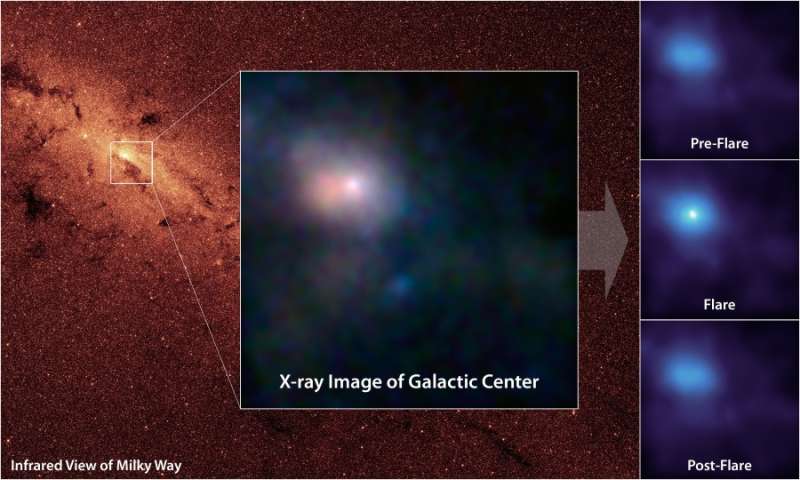
|
Credit & Copyright: NASA,
JPL-Caltech,
NuSTAR project
Explanation:
At the center of our Milky Way Galaxy,
a mere 27,000 light-years away,
lies a black hole with 4 million times the mass of the Sun.
Fondly known as Sagittarius A* (pronounced A-star),
the Milky Way's black hole is
fortunately mild-mannered compared
to the central black holes in
distant active galaxies, much
more calmly consuming material around it.
From time to time it does flare-up, though.
A recent outburst lasting several hours is captured in
this series of premier X-ray images
from the orbiting
Nuclear
Spectroscopic Telescope Array (NuSTAR).
Launched last June 13, NuSTAR is the first to provide
focused views
of the area surrounding Sgr A* at X-ray energies higher than
those accessible to Chandra and XMM observatories.
Spanning two days of NuSTAR observations,
the recent flare sequence is illustrated in the panels at the far right.
X-rays are generated in material heated to over 100 million
degrees Celsius, accelerated to nearly the speed of light as it
falls into the Miky Way's central black hole.
The main inset X-ray image
spans about 100 light-years.
In it, the bright white region represents the hottest material closest
to the black hole, while the pinkish cloud likely belongs to a
nearby supernova remnant.
|
January February March April May June July August September October November December |
| ||||||||||||||||||||||||||||||||||||||||||||||||
NASA Web Site Statements, Warnings, and Disclaimers
NASA Official: Jay Norris. Specific rights apply.
A service of: LHEA at NASA / GSFC
& Michigan Tech. U.
Based on Astronomy Picture
Of the Day
Publications with keywords: black hole - Milky Way
Publications with words: black hole - Milky Way
See also:
